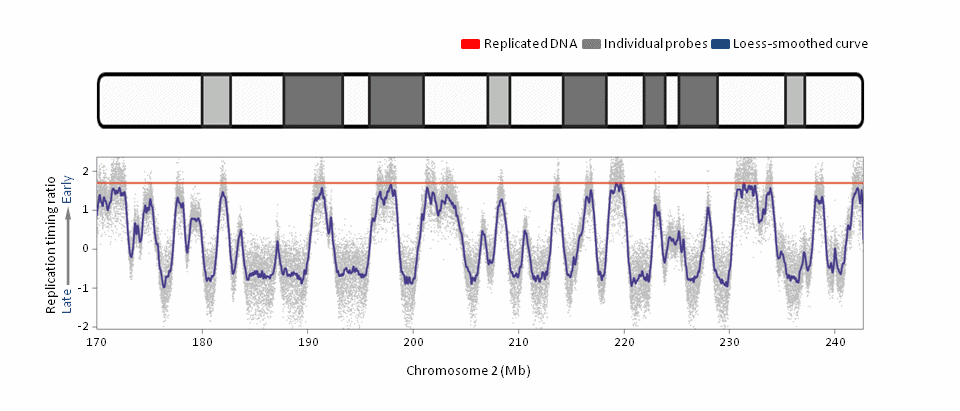Biological context
DNA replication
Replication is the only molecular mechanism that can faithfully "copy" DNA in order to duplicate the genetic legacy in its integrity before cell division. This mechanism occurs during the S phase of the cell cycle. In eukaryotes, this mecanism is controlled by two programs : the spatial program that’s deciding the place of the beginning of replication called replication origin ; the temporal program that’s deciding when an origin is fired during the S-phase. The origin usage and temporal firing of these origins are linked to the chromosome structure, organization in nucleus, differentiation process, and with transcription process along the genome.
Replication timing
DNA replication occurs in a defined temporal order during S phase, known as the replication timing programme, which is regulated not only during the cell cycle but also during the process of development and differentiation. The units of replication timing regulation, known as replication domains (RDs), frequently comprise several nearly synchronously firing replication origins. Replication domains correspond to topologically associating domains (TADs) mapped by chromatin conformation capture methods and are likely to be the molecular equivalents of replication foci observed using cytogenetic methods. Both TAD and replication foci are considered to be stable structural units of chromosomes, conserved through the cell cycle and development, and accordingly, the boundaries of RDs also appear to be stable in different cell types. During both normal development and progression of disease, distinct cell states are characterized by unique replication timing signatures, with approximately half of genomic RDs switching replication timing between these cell states. Advances in functional genomics provide hope that we can soon gain an understanding of the cause and consequence of the replication timing programme and its myriad correlations with chromatin context and gene regulation.
